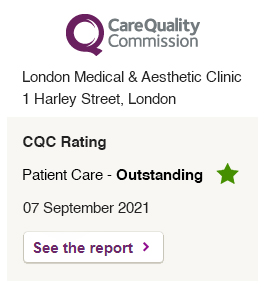Chemical Peels are an important part of cosmetic and aesthetic practices. They are an affordable way for patients to achieve significant results. When used correctly and appropriately chemical peels are generally a safe procedure. Over the last number of years, the popularity of the use of chemical peels in the cosmetic industry has greatly increased as the amount of skin conditions they can treat is now rather extensive.

History of chemical peels
There is a long history behind skin peels. Early transcripts show that ancient Egyptian women used sour milk to rejuvenate the skin. Sour milk contains lactic acid which is an AHA acid that rejuvenates the skin. They also used other substances such as animal oils which improved the texture of the skin.
People in Roman times were extremely conscience of their skin, grapes and other fruits for commonly used to exfoliate the skin. Sulphur, mustard, and limestone were also used to even the skin and to fade freckles. During the First World War, phenol was used to under bandages for healing and purifying the skin and for treating scars.
These records show that skincare was always important, especially to women, throughout the ages.
Chemical Peels rejuvenate the skin by removing the dead skin cells on the top layer of the skin and by promoting the production of new healthy cells. They induce a controlled injury to the skin at a specific depth. As the skin heals there will be an improvement in the appearance and texture of the skin. By stimulating the collagen, melanin is distributed more evenly and the skin is given a tightening effect. The way that skin peels are classified is by the depth of penetration.
They are divided into three categories: superficial, medium and deep peels. The deeper the peel the more significant the results will be. However, the depth of the peels also reflects the amount of injury caused to the skin and the length of downtime required after the peel.
Superficial Peels/Light Peels
Superficial peels are the lightest types of peels. They are commonly called ‘lunchtime peels’. There is no real downtime with these peels. As they are only superficial, they only remove dead skin cells from the top layer of the skin, the epidermis.
They are good for skin exfoliation, skin brightening, and smoothing. Light chemical peels are most effective for people who have mild acne/acne scarring, mild sun damage or pigmentation, and fine lines or wrinkles.
There may be some slight stinging or tingling to the skin although most patients do not experience any discomfort. The downtime for the superficial peel is minimal although some patients do experience some slight skin peeling for three to five days but this can be disguised with makeup. Light Chemical Peels are usually made from AHA’s or BHA’s. AHA’s are derived from milk and fruit sugars, the most common ones used are glycolic and lactic acid. The BHA salicylic acid is also very commonly used.
Medium Peels
Medium depth peels remove dead skin from both the epidermis and the top of the dermis. TCA is one of the most common medium peels is TCA, it can be used in different strengths by blending it with other agents.
Medium depth peels work strongly on fine lines, wrinkles, acne scarring or scarring following a trauma, pigmentation or texture irregularities. These agents, when applied to the skin penetrate adequately to destroy the epidermis and part if not all of the top layer of the dermis.
The healing time for these peels is approximately one week, however, this depends on the amount applied and the length of time it is left on the skin.

Deep Peels
Deep peels are not as common nowadays as they once were. This is because they are not suitable to be performed within the usual aesthetic environment as they require anesthetic and in some cases some sedation. Another factor is that superficial and medium peels continue to evolve and patients can now get the same results as deep peels by having treatments more often without the long downtime. However, there is still a need for deep peels as some patients cannot achieve the desired results with the lighter peels and some do not mind the longer downtime.
Deep peels are suitable for people with deep scarring, heavy wrinkles or severe photo damage. It permeates deep into the dermis and maximizes the collagen stimulating effect. After the peel a mask is needed to protect the skin for the first 24 hours, antiseptic creams, dressings, and antibiotics are required to prevent infection. The healing process can take up to three months. These deep peels are usually done in a hospital environment.
Who is suitable for a chemical peel
Patients interested in chemical peels usually come to the clinic because they want to enhance or renew the look of their skin. The consultation is important to determine what the patient is hoping to achieve from the peel.
Some of the most common and treatable complaints are:
- Acne and acne scarring
- improve skins texture and tone
- Open pores
- reduce fine lines and wrinkles
- brighten and lighten the skin
- to reduce the signs of ageing

Dr Ayham Al-Ayoubi: It is extremely important for practitioners to understand what each individual’s desired result is so that they can educate them on the best option for them. When peels are used correctly they can deliver great results so it is important that practitioners understand the different ingredients and the effects that they can have on the skin. The depth and type of peel chosen depend on the patient’s skin type and the problems that they would like addressed.
Aftercare and summary
After a chemical peel, some patients may experience some skin peeling, reddening of the skin and edema for a couple of days. An SPF 30-50 cream must be applied until the skin heals and patients must try to avoid direct sunlight, this helps to maintain the results. Some peels may require specific skin care to be applied for a number of days afterward to optimize results. Instruction for aftercare should be given to all patients after having a chemical peel.
Chemicals peels have always delivered great results when used correctly. Over the last few years, chemical peels have been used more commonly in conjunction with other treatments such as microdermabrasion and laser treatments to enhance their results. Despite chemical peels being an effective treatment and their increasing popularity, they do damage the skin and should be performed by an experienced medical practitioner to ensure the patient’s safety. At the London Medical and Aesthetic Clinic there are many ranges of peels available to suit almost every patient and to combat the most popular patient complaints.





